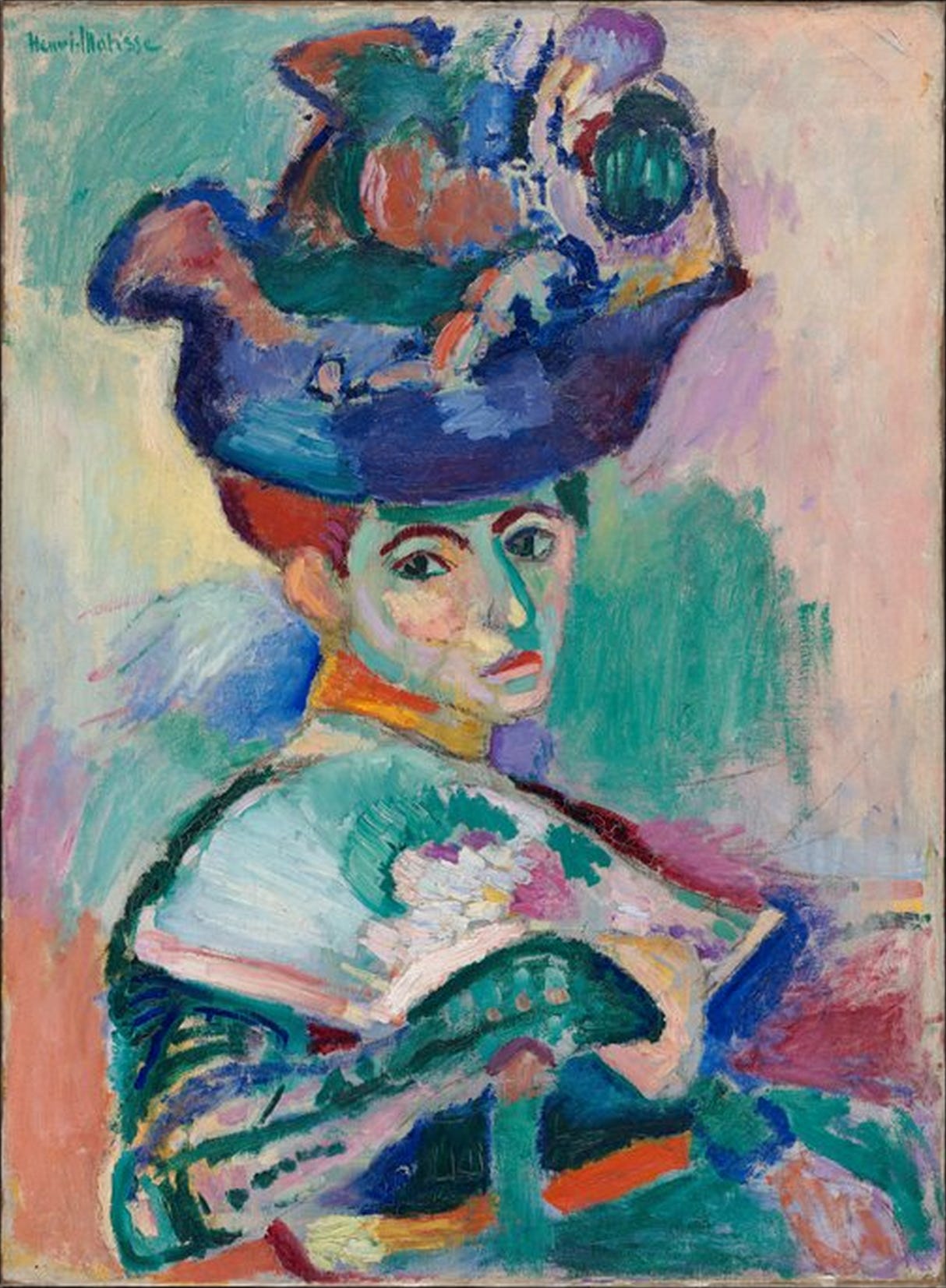Sight Unseen
Someone recently asked me if I ever see old clients out and about, and I said, “Probably, but I don’t recognize them, I’m pretty faceblind.”
I usually recognize people by their hair or by their outfits, but faces take longer for me. Social media is helpful for this, looking at people’s faces and studying them. Painting for years also helped, I would do portraits obsessively, especially self portraits, because I wanted to be able to recognize myself. I would look in the mirror and see a stranger, every time, wonder what I really looked like.
At first, I was really horrible at painting, at drawing. I’d try to translate whatever was in front of me onto paper and cry with frustration. Always wrong, humiliatingly so. But my art teacher said I had an eye for color, gave me a book on Matisse, told me to study up on Fauvism. And what could I do but fall in love?
Matisse is still one of my favorite artists. His work is easy to enjoy, bright playful colours, ecstatic brushstrokes that draw the eye around elegant compositions up and around and back again, the type of work that encourages you to spend an afternoon in front of it, delighting in little treats every time, the umber of her hair against the cerulean of her hat, the lavender carefully placed to make her neck pop.
Color made art more approachable; there was something to strive towards besides a bland representationism. By the end of kindergarten, under the careful guidance of my teacher, I had developed a very specific taste: Matisse, Monet, Munch, Mucha, Van Gogh, Klimt, Kahlo, Toulouse-Lautrec. Colours, movement, hidden symbols, and composition all so much more important to their work than banal depiction of what people looked like. After all, we had photography!
Toulouse-Lautrec, who I can’t help but go off on a tangent about, spent all his time in whorehouses painting the ladies and managed to be the model for some of my favorite photographs of all time…
Regardless, it’s important to train your eye, but it wasn’t until I was regularly doing figure drawing in high school that I finally learned to do so. The model, a sheet cheap paper, a stick of charcoal, a scrap of leather shammy, thirty seconds to make something the eye could recognize, until you get to the longer thirty minute poses, when you finally have time to breathe. After three and a half years of figure drawing three times a week, my teacher finally gave me a compliment. I still wasn’t particularly good! Everyone should learn to draw from life, not because it’s an important skill in and of itself, but because it trains your eye, because it changes how you see things.
Most importantly for me, it changed how I saw myself and others. It’s easy to find the beauty in someone’s face when that’s your job. That moment when they’re turning their head and the light lilts just so over their cheekbone: that’s it. Hold it.
I finally was really seeing people, seeing their proportions, the space between their eyes and their nose, the gesalt, how it all fit together. I still can’t hold faces or any image at all in my mind really, it’s blurry, like making pictures with colored sand. Aphantasia, it’s called, and I went from being able to visualize nothing at all to slowly, barely, grasping at something.
To this day I can’t call up people’s faces, not really, the idea of them, sure, a vague outline. I’ll look at photos of people I know or used to know often, because otherwise, I can’t see them. When I’m falling hard for someone I’ll draw them, over and over, not for any other purpose than trying to permanently imprint them on my memory, the curve of their nose and how it reaches up into their brow and the pout of their lips, the line of their eye. It’s probably why I take so many photos, too, trying to hold it all, carry it with me like a pack rat.
But I remember their stories, their narratives, and I think for most people that’s more important than whether or not I can recall their face. I remember every detail, it must be unnerving for some, whether their mother refuses to drink coffee black even though they had no cream the last time she called, the falling out they had with their childhood best friend. If I can’t hold an image in my head, I can hold a character, their pleasant little stories, how they’ve moved their way through life.
I can’t see the face of my grandmother, who’s been dead now for some time, no photos on hand for me to look at - she never really seemed like having her photo taken in general. But I remember everything she told me, how to soak in bleach the sea shells we found on holiday to avoid a stink, the firm grasp of her hand and how it turned shaky as she grew older but no less strong, how she would stand with quiet regality and water her house plants, her hands in the dirt showing me how to cut back their roots, her small smile as she taught me how to crochet, the rooster tiles in her kitchen, antiques she had hunted for for years, where she taught me how to make pie crust from scratch and bone a fish.
I can’t see her, but I feel her and maybe that’s more important anyways.





